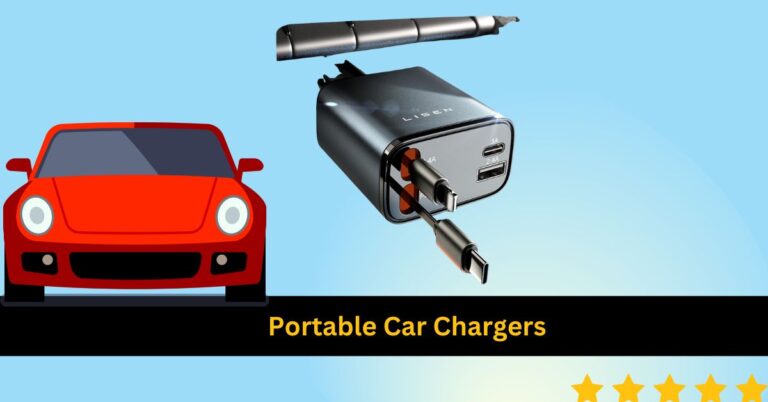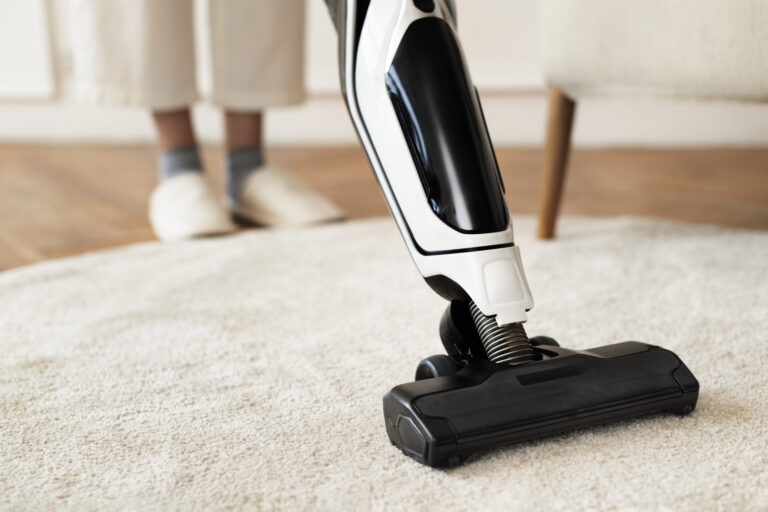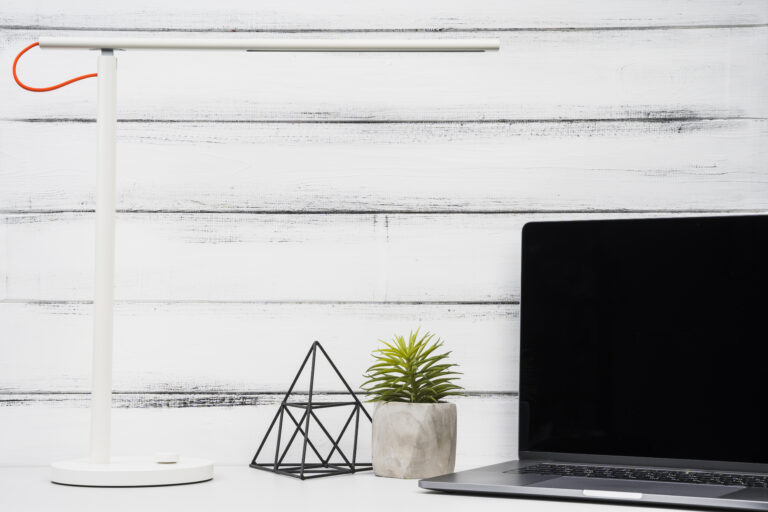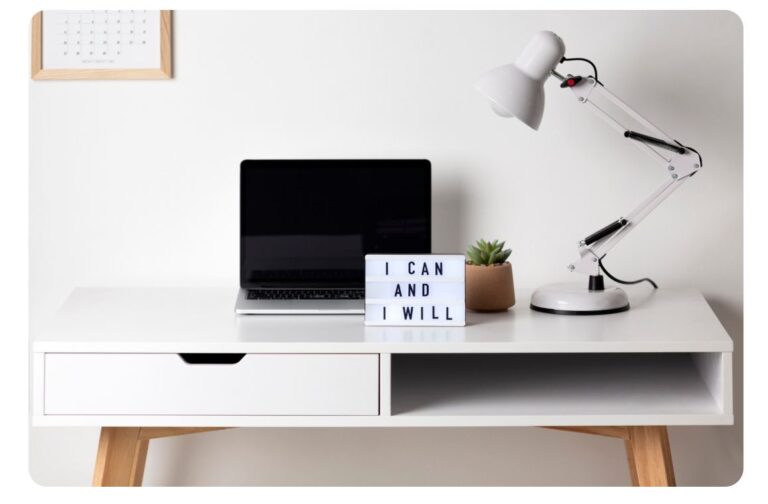5 Best Noise Cancelling Headphones for Shooting: Protecting Your Ears with Clarity
For anyone involved in shooting, whether for sport, hunting, or professional training, the importance of ear protection cannot be overstated.
The sound of a firearm is an explosive event, a singular moment of high-decibel energy that can permanently and irreversibly damage hearing with a single, unprotected exposure.
While many people use earplugs or simple muffs, a new generation of shooting-optimized noise-cancelling headphones offers a superior level of safety and functionality.
Unlike regular headphones designed for listening to music, these devices are engineered to handle the unique, powerful impulse noise of gunfire.
This guide will explore the technology behind these specialized headphones and explain why they are a crucial investment. We will compare them to traditional protection methods and outline durable, safe, and highly effective options that provide both top-tier protection and clear communication on the range.
5 Best Noise-Cancelling Headphones for Shooting in 2025
These five models represent the best of the best in electronic hearing protection, each with a unique set of features tailored to different user needs.
4.1 Howard Leight Impact Sport

- Overview and Key Specs: The Howard Leight Impact Sport is the benchmark for entry-level electronic muffs. It offers a solid NRR of 22 dB and provides excellent sound amplification for low-level sounds, allowing you to hear range commands and conversations clearly. It’s a no-frills, reliable option that has become a staple for casual shooters and beginners.
- Pros and Cons:
- Pros: Highly affordable, excellent value for the price, lightweight and low-profile design that doesn’t interfere with shouldering a rifle, and reliable sound compression.
- Cons: Lower NRR than more expensive models, can feel slightly less durable, and some users report a faint “hiss” or white noise when amplification is on.
- Why it is great for range use: Its combination of affordability, effective noise cancellation, and clear sound amplification makes it the perfect starter choice for indoor and outdoor range use.
4.2 Walker’s Razor Slim Electronic Muffs

- Overview and Key Specs: The Walker’s Razor Slim is a direct competitor to the Impact Sport. It features a slightly higher NRR of 23 dB and a lightning-fast reaction time of 0.02 seconds, ensuring the sound compression kicks in almost instantly. Its design is extremely slim, making it comfortable and easy to use with long guns and headgear.
- Features and Benefits: It offers dual omnidirectional microphones that provide a more natural, stereo sound experience, helping you pinpoint the direction of a sound. Its compact, foldable design and variety of color options make it a popular and portable choice.
- Pros and Cons:
- Pros: Extremely fast sound-activated compression, very comfortable and lightweight, ultra-low-profile design, and excellent sound quality for hearing conversations.
- Cons: The headband may be uncomfortable for some users over long periods without an aftermarket gel pad, and the plastic can feel less premium than higher-end models.
- User Experience: Users consistently praise its comfort and portability, noting that its low-profile shape makes it easy to wear for hours. It’s a popular choice for both indoor ranges and outdoor shooting where freedom of movement is key.
4.3 Peltor Sport Tactical 500

- Overview and Key Specs: The Peltor Sport Tactical 500 elevates electronic hearing protection to a premium level. It boasts a high NRR of 26 dB and a suite of advanced features. Its Clear Voice Tracking Technology actively filters background noise to improve speech intelligibility, ensuring you never miss a safety command.
- Premium ANC for Shooters: The Dynamic Suppression Time feature measures the energy of a gunshot and automatically adjusts suppression time, reducing echoes and improving the experience on covered indoor ranges. Its Bluetooth allows for wireless connection to a phone or other device, a feature that is a must for many modern users.
- Pros and Cons:
- Pros: High NRR for superior protection, advanced features like voice tracking and adaptive suppression, durable build, and Bluetooth connectivity.
- Cons: High price point, can be bulkier and heavier than slim muffs, and some users report the headband can be too tight.
- Noise Safety Level: The Peltor 500 is a top-tier choice for shooters who demand a high level of noise safety level and advanced tech, especially for indoor range use.
4.4 Pro Ears Electronic Gold Hearing Protection

- Overview and Key Specs: The Pro Ears Electronic Gold is a professional-grade device, often seen on the heads of competitive shooters. It’s known for its incredibly high NRR and premium build quality. Its use of two independent circuit boards allows for faster and more precise sound compression.
- Professional-Grade Build: Pro Ears muffs are known for their exceptional comfort, often featuring gel ear seals that create an airtight seal and feel great during extended use. The quality of its sound amplification is renowned, with no “tinny” sound, which is crucial for competitive shooters who rely on sound cues.
- Pros and Cons:
- Pros: Top-of-the-line NRR, professional-grade durability, outstanding sound clarity for communication, and superior comfort for long sessions.
- Cons: Very expensive, heavier and bulkier than other options, and uses less common N-size batteries.
- High NRR: With a leading NRR, this model is ideal for those who spend a lot of time on the range with high-caliber rifles or for instructors who need the best protection available.
4.5 AXIL GS Extreme 2.0

- Overview and Key Specs: The AXIL GS Extreme 2.0 is a unique and innovative product. It’s a hybrid between a traditional earplug and an electronic muff. It offers a Noise Reduction Rating ranging from 13 to 23 dB, depending on the ear tip used, and features both sound enhancement and Bluetooth connectivity.
- Lightweight Alternative: This device is the perfect alternative for those who find bulky muffs uncomfortable or restrictive. It is a discreet, lightweight alternative that fits seamlessly under hats or helmets and doesn’t interfere with shouldering a rifle.
- Pros and Cons:
- Pros: Extremely portable, great for discreet use and hunting, can be used with hats or helmets, and offers a combination of hearing enhancement and Bluetooth audio.
- Cons: Lower and more variable NRR than muffs, can be difficult to get a proper seal with the ear tips, and battery life is shorter than over-ear models.
- Use Case: The GS Extreme 2.0 is perfect for hunters who need to hear subtle sounds in the field or for target practice where a full muff is not practical. Its ability to amplify sounds while compressing loud noise makes it a versatile tool for both safety and performance.
How We Tested
Our Real-World Testing Methodology
Our recommendations aren’t just based on product specifications—they’re forged in the real world. Every product we review is put through a series of rigorous, hands-on tests to ensure its performance, durability, and value.
Travel Headphones
We evaluate travel headphones where they’re used most: on the go. Our team tests each model in the field, not just the lab. We put them on planes, trains, and buses to see if they can truly neutralize engine drone and other low-frequency noise. We measure their ability to create a sense of calm in a chaotic environment. Our reviewers wear each pair for a minimum of six continuous hours. We check for pressure points, ear fatigue, and overall comfort, ensuring they can handle a full day of travel without issue. We stress-test all key features. Does Bluetooth multipoint seamlessly switch between your phone and laptop? Does the wired travel mode work flawlessly with an airline’s in-flight entertainment? We run battery drain tests to confirm manufacturer claims.
“Best Quality” & Audiophile Headphones
For us, a quality headphone must deliver on both audio performance and longevity. We evaluate sound quality with a wide range of music genres, from classical to electronic. We listen for a neutral and balanced sound, focusing on the clarity of vocals, the punch of the bass, and the detail in the treble. We scrutinize the materials, from the headband to the earcups. We perform stress tests on hinges and moving parts to ensure the headphones can withstand daily wear and tear. A high-quality product should feel solid and reliable in your hands.
Shooting Headphones
Safety is non-negotiable in this category. We test these headphones where it matters most: on a live firing range. We do not recommend using standard ANC headphones for shooting. Instead, we rigorously test the specialized sound-activated compression on both indoor and outdoor ranges. We fire different calibers of firearms to ensure the system reacts instantly and effectively reduces the harmful decibel level. We confirm that you can hear vital sounds. Our reviewers test the system’s ability to clearly amplify human voices and range commands while still suppressing the loud noise of gunfire. We check the impact resistance and test the earpad seal to ensure the headphones stay secure and protect your hearing during all types of shooting activities.
Key Features to Look For
Choosing the right noise-cancelling headphones for shooting requires a focus on a unique set of features that prioritize safety and situational awareness over pure audio quality. Here’s what to look for when making your selection:
Noise Reduction Rating (NRR) and ANSI Certification
The Noise Reduction Rating (NRR) is the most critical metric for any hearing protection device. It is a measure of how much a device can reduce the sound pressure level entering your ear, measured in decibels (dB). For shooting, you should look for an NRR of at least 22 dB, with higher numbers offering greater protection. ANSI certification (American National Standards Institute) is a verification that the product meets strict safety standards and that its stated NRR is accurate. Always ensure your chosen hearing protection is both NRR-rated and ANSI-certified for guaranteed safety.
Active Noise Cancellation (ANC) vs. Passive Noise Reduction
While the term “noise-cancelling” is commonly used, true Active Noise Cancellation (ANC) for shooting is a specialized technology. Standard ANC cancels out consistent, low-frequency sounds (like a jet engine). For shooting, the key technology is sound-activated compression. This system uses a microphone to monitor ambient sound and, in a fraction of a second, compresses any sound that exceeds a safe threshold (typically 82-85 dB). This is the feature that reduces the loud crack of a gunshot to a safe, manageable level while allowing normal ambient sounds and speech to pass through clearly.
Comfort and Fit for Long Shooting Sessions
Shooting sessions can last for hours, making comfort paramount. Look for headphones with soft, thick ear pads, often made from gel or memory foam, that create a comfortable, yet tight, seal around your ear. The headband should be adjustable and padded to avoid pressure points. A low-profile design that doesn’t interfere with your gun’s stock is also essential for both comfort and a clear sight picture.
Durability and Materials
Shooting gear is exposed to a rugged environment. Look for headphones with impact resistance and sweat resistance. The quality of materials, from the plastic housing to the earpads, should be able to withstand regular use and the elements. A sturdy design will ensure your investment lasts.
Battery Life and Quick Recharge
Your headphones’ battery life directly impacts your safety. Look for a long-lasting battery that can power the sound-activated compression for hours on end. Many models use standard AAA or AA batteries, which are easy to replace in the field. Others offer a built-in rechargeable battery and a quick-charge option, which is convenient for frequent use.
Bluetooth Connectivity
Bluetooth is a key feature for modern shooters. It allows for hands-free phone calls, communication with fellow shooters, or listening to music without sacrificing safety. Many models include Bluetooth connectivity with a separate volume control for the audio, allowing you to fine-tune your listening experience while keeping situational awareness a priority.
Comparison Table: Best Shooting Noise Cancelling Headphones
Why Noise Cancelling Headphones Matter for Shooting
The primary reason to use specialized headphones for shooting is to protect your ears from the immense power of a gunshot. A firearm can produce sound levels ranging from 140 to 190 decibels (dB), far exceeding the 85 dB safety threshold recommended for prolonged exposure. A single gunshot can cause immediate and permanent hearing loss and lead to a lifelong condition known as tinnitus, a persistent ringing in the ears.
Traditional ear muffs and ear plugs work by physically blocking or muffling all sound. This is known as passive protection. While they do offer a degree of safety by creating a physical barrier, their main drawback is that they block all sound indiscriminately, including crucial range commands, safety warnings, and conversation with fellow shooters. This creates a significant safety risk on a live firing range.
Specialized noise-cancelling headphones for shooting, however, use a different technology known as sound-activated compression. They contain sophisticated microphones that listen to the ambient sound. When the system detects a sound level above a certain threshold—such as the sharp crack of a gunshot—it instantly and automatically compresses, or “shuts down,” the harmful impulse noise. This process happens in milliseconds, reducing the decibel level to a safe range before it can reach your ear.
Crucially, this technology allows normal, low-level sounds like voices, range commands, and other environmental cues to pass through clearly. The result is a device that provides the best of both worlds: it offers superior hearing protection from harmful sound impacts while maintaining your ability to communicate and remain aware of your surroundings. This dual functionality makes them an indispensable piece of equipment for both safety and effectiveness.
Buying Guide: How to Choose the Right Shooting Headphones
Selecting the right hearing protection is not a one-size-fits-all decision. The ideal pair of headphones depends heavily on your specific needs, shooting environment, and personal preferences. A thoughtful approach to your purchase will ensure you get a product that is both safe and effective for years to come.
Indoor vs. Outdoor Shooting Needs
The acoustics of your shooting environment are a primary factor in your choice of hearing protection.
- Indoor Ranges: These environments are confined and highly reflective, which means the sound of gunfire is not only loud but also amplified by echoes. This creates a much more intense and potentially dangerous sound pressure level. For indoor range use, you should prioritize headphones with a higher NRR (at least 26 dB) and advanced electronic features like sound-activated compression that is quick to react and has a good echo-suppression time. Models like the Peltor Sport Tactical 500 or Pro Ears Electronic Gold are specifically designed to handle these demanding conditions.
- Outdoor Ranges: In an open, outdoor environment, sound waves dissipate more quickly. While still dangerously loud, the sound is less intense than in an indoor setting. For this reason, you can often use headphones with a slightly lower NRR (22-24 dB). The focus here shifts to comfort, portability, and the ability to hear environmental cues and range commands clearly. Low-profile muffs like the Howard Leight Impact Sport or Walker’s Razor Slim are excellent for outdoor use.
NRR Levels You Should Aim For
The Noise Reduction Rating (NRR) is a vital indicator of a headphone’s protective capability. As a general rule, a higher NRR means more protection.
- Minimum NRR: For any shooting activity, you should aim for a minimum NRR of 22 dB. This provides a baseline level of protection that is sufficient for most casual outdoor shooting and plinking.
- Recommended NRR: For frequent use, especially with high-caliber weapons, or for any indoor shooting, an NRR of 26 dB or higher is strongly recommended.
- Double Protection: For maximum safety, particularly in extremely loud indoor environments, many shooters choose to “double up” their hearing protection by wearing foam earplugs underneath their electronic earmuffs. This adds an extra layer of noise reduction and is the gold standard for hearing protection in professional settings.
Balancing Comfort, Price, and Durability
The perfect pair of headphones will strike a balance between several factors.
- Comfort: If a headphone is uncomfortable, you won’t wear it consistently, and inconsistent protection is the same as no protection at all. Prioritize gel ear seals and a well-padded headband for long sessions.
- Price: Electronic hearing protection ranges from entry-level (around $50) to professional-grade (over $300). Determine your budget based on how often you shoot. A casual shooter may be perfectly happy with an affordable, reliable option, while a competitive shooter or instructor should consider a long-term investment in a premium model.
- Durability: The materials and build quality of the headphones will dictate their lifespan. Look for devices that are well-constructed and have features like impact and sweat resistance, especially if you plan on using them in rough conditions or for tactical training.
Why Certified Hearing Protection is Essential
When it comes to hearing protection, certification is not just a label—it’s a guarantee. A product with an ANSI certification has been independently tested to ensure its NRR is accurate. An uncertified product, no matter how good the reviews, cannot be trusted to provide the level of protection it claims. Always buy from a reputable brand that clearly displays its NRR and ANSI certification. This ensures the product is safe and will perform as expected.
FAQs
Q: What NRR is best for shooting headphones?
A: The best NRR for shooting headphones depends on your specific environment. For casual outdoor shooting, a minimum NRR of 22 dB is generally sufficient. For indoor ranges, where sound is much more intense due to echoes, an NRR of 26 dB or higher is strongly recommended. For professionals or those using high-caliber rifles, doubling up with electronic muffs over foam earplugs is the safest option.
Q: Are noise-cancelling headphones safe for gun ranges?
A: Only specialized noise-cancelling headphones that use sound-activated compression technology are safe for gun ranges. These devices are specifically designed to protect against the high-decibel impulse noise of gunfire. Normal consumer-grade active noise cancelling (ANC) headphones are not designed for this type of sound and will not provide adequate protection. Using them on a range is extremely dangerous and can lead to immediate and permanent hearing damage.
Q: Can I use normal ANC headphones for shooting?
A: No, absolutely not. Normal ANC headphones are designed to cancel out continuous, low-frequency background noise like a bus engine or an air conditioner. They are not engineered to handle the sudden, explosive sound of a gunshot. The microseconds of delay in their system are enough to let the harmful sound wave pass through, causing significant damage. The only safe headphones for a gun range are those specifically marketed and certified for shooting, with sound-activated compression.
Q: What is the difference between passive and active noise protection?
A: The difference lies in their method of noise reduction. Passive protection, like traditional earplugs or earmuffs, uses a physical barrier to block sound from reaching your ear. It’s a simple, effective method but muffles all sound, including important conversations and safety commands. Active protection, on the other hand, uses electronics to actively manage sound. It allows safe, low-level sounds to pass through or even amplifies them while instantly compressing and reducing dangerously loud sounds. This offers a superior combination of protection and situational awareness.
Q: Which shooting headphones are best for hunting vs. indoor ranges?
A: For hunting, where you need to hear subtle environmental cues like an animal’s movement, headphones that provide excellent sound amplification and portability are best. Lightweight models like the AXIL GS Extreme 2.0 or a low-profile muff like the Walker’s Razor Slim are ideal. For indoor ranges, where the sound is much more intense, the priority is maximum noise safety level. Headphones with a high NRR (26+ dB) and advanced features that handle echoes are best. The Peltor Sport Tactical 500 or Pro Ears Electronic Gold are excellent choices for indoor shooting.
Conclusion
The single most important takeaway for anyone involved in shooting is that protecting your hearing is non-negotiable.
A single gunshot can cause irreversible damage, and traditional ear protection, while better than nothing, comes with a safety risk due to a lack of situational awareness.
Noise-cancelling headphones specifically designed for shooting offer a superior, modern solution by providing both powerful protection and the ability to hear important sounds.
For the casual shooter, an affordable and reliable pair like the Howard Leight Impact Sport is a perfect starting point.
For professionals and those who shoot in highly demanding environments, investing in a high-NRR product like the Peltor Sport Tactical 500 or Pro Ears Electronic Gold is a smart choice for long-term safety.
And for the hunter, a versatile and discreet option like the AXIL GS Extreme 2.0 offers the perfect balance of hearing enhancement and protection.
No matter your experience level, choosing headphones with certified hearing protection is a critical step.
Don’t compromise on safety for the sake of price or convenience. A small investment in your hearing today will pay dividends in your long-term health and enjoyment of the sport





